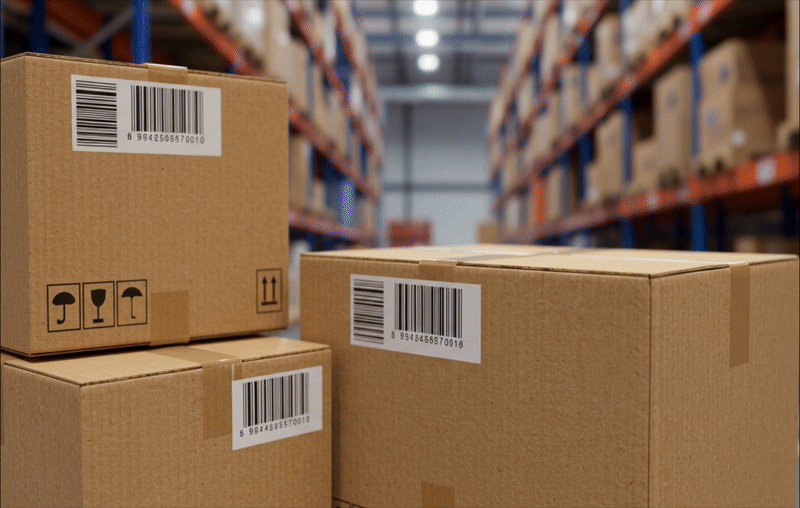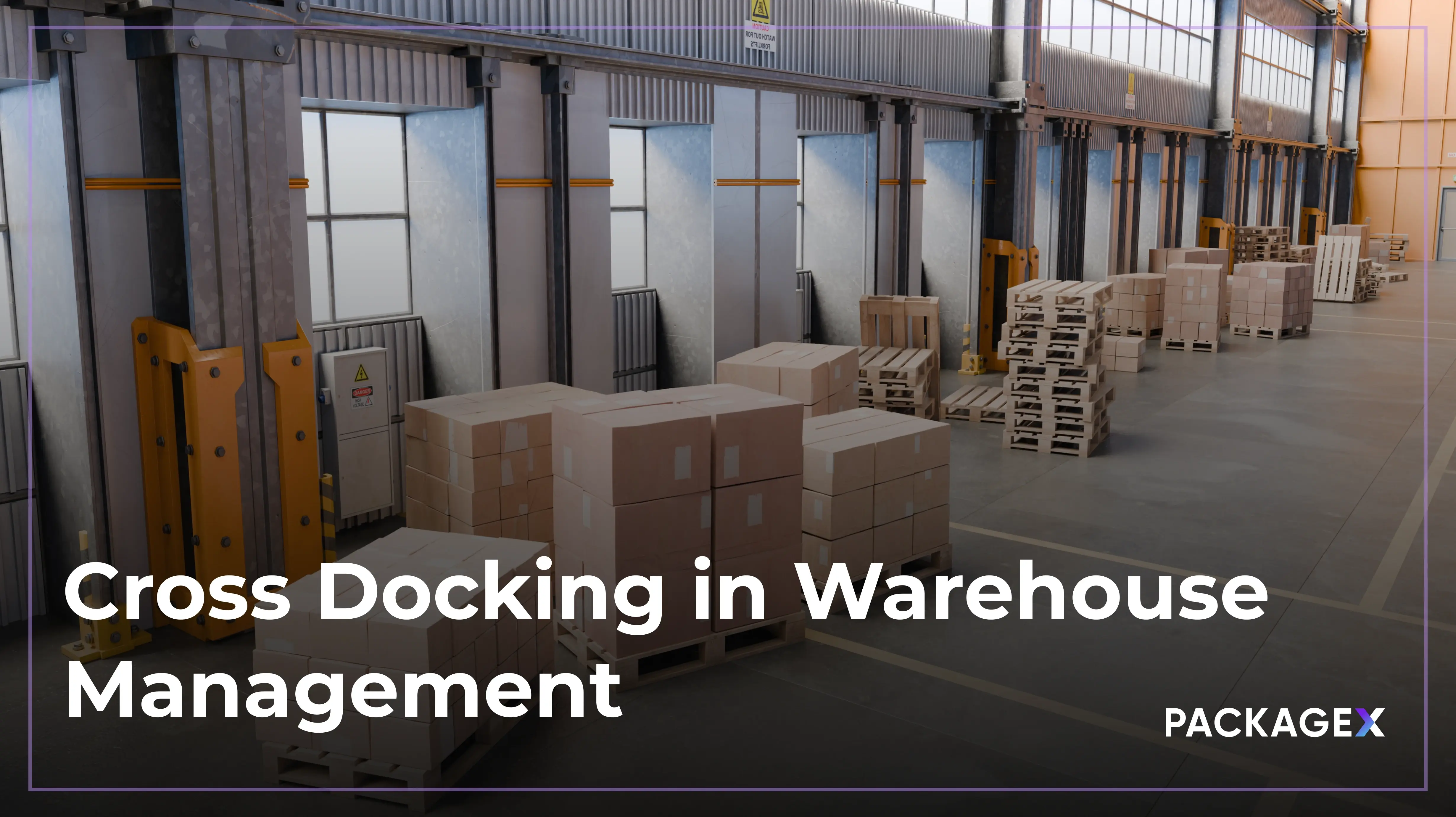We analyzed 50+ conversations with 3PL operations managers processing over 500,000 packages monthly.
They all said the same thing.
Manual label processing is eating their day alive.
Here's what the data revealed.
The thing nobody talks about
Your receiving team spends half their shift typing.
Not moving boxes. Not organizing inventory. Not improving throughput.
Just typing label data into systems.
We talked to facilities doing 15,000 packages a day. Some running tight 50,000 square foot operations. Others managing warehouses you could fit three football fields inside.
Same story everywhere.
Finding 1: Manual entry takes 3 to 5 minutes per package
Here's the actual workflow we heard described in nearly every call.
The worker receives a package at the dock. Opens it, looking for any documentation. Finds the label or packing slip. Manually types the tracking number into the system. Then the sender's information. Then the recipient details. Then the PO number, if there is one. Then, it verifies everything against the purchase order.
Then moves to the following package.
Research backs this up. Manual data entry for shipping labels takes 10 to 15 minutes per package when you factor in the whole process.
Consider a standard operation that moves 4,000 packages monthly.
At 3 minutes per package, that's 12,000 minutes of typing. Comes out to 200 hours. Which is basically 25 full shifts where someone does nothing but enter label data.
You're paying $17 hourly on average for warehouse management. So that's $3,400 a month. Just for typing.
Multiply that by 12 months and you're at $40,800 annually. Per location.
One operations manager told us, "We're essentially paying someone to be a human keyboard, and it makes no sense."
Finding 2: Multiple barcodes add 30 to 45 seconds of confusion per package
This came up in almost every conversation.
"The package has 5 different barcodes and my team doesn't know which one to scan."
Modern shipping labels contain carrier tracking barcodes, return label barcodes, PO number barcodes, invoice barcodes, and internal warehouse barcodes.
All on the same label.
Under time pressure during peak receiving hours, workers scan the wrong barcode. The package gets logged to the wrong system. Someone has to catch it and manually correct it later.
Industry data shows packages with multiple barcodes cause scanning errors on 10 to 15% of shipments.
For 4,000 packages monthly, that's 400 to 600 errors.
Each error takes 10 to 15 minutes to identify and correct.
Say 500 errors at 12 minutes to fix each one. You're looking at 6,000 minutes monthly. That's 100 hours. Twelve and a half full workdays.
Lost because we couldn't figure out which barcode someone had scanned incorrectly.
Finding 3: 12% of shipments arrive with zero advance notice
Operations managers kept mentioning this.
"We have no idea what's coming until the truck backs up to our dock."
Without an Advanced Shipping Notice, receiving teams must open every package. Hunt for documentation inside. Match contents to purchase orders manually. Update inventory systems by hand.
Research shows 12% of 3PL inbound shipments arrive without proper ASNs.
That means 1 in 8 packages shows up as a complete mystery.
For our 4,000 package example, that's 480 packages arriving blind every month.
Each one requires an extra 5 to 10 minutes of detective work beyond normal processing.
480 packages times 7 minutes equals 3,360 additional minutes. That's 56 hours monthly. Seven more full workdays.
Gone.
Finding 4: Even 1% error rate costs $24,000 annually
One facility manager told us, "A single mis-typed tracking number can delay a customer shipment by 3 days."
Manual data entry error rates range from 1% to 4% depending on complexity and time pressure.
Even at the low end of 1%, you're looking at 40 errors per 4,000 packages.
Research shows each manual entry error costs an average of $50 to identify and correct.
40 errors times $50 equals $2,000 monthly in pure correction costs.
$24,000 annually.
That's before counting delayed shipments. Before customer complaints. Before losing business from service failures.
Just the direct cost of fixing typing mistakes.
The 6-hour daily calculation
Here's the actual breakdown for operations processing 4,000 packages monthly.
Manual data entry eats 200 hours every month. Barcode confusion adds another 100 hours. Shipments arriving without ASNs cost you 56 hours.
Add it up, and you get 356 hours monthly spent just processing label information.
Divide that across 20 working days and you're looking at 17.8 hours daily. Split between a 3-person receiving tea,m and each person burns nearly 6 hours per day on label data.
That's their entire shift. More than half of it, anyway.
What Auburn University figured out
Auburn runs a package receiving across its entire campus. Multiple buildings. Thousands of inbound shipments monthly from different carriers.
They had the same problem every university mail operation has. Workers manually typing label data. Trying to match packages to recipients. Dealing with missing information on labels.
Their solution was computer vision scanning.
Now when packages arrive, staff takes one photo of the shipping label. The system reads everything on it. Tracking numbers. Sender and recipient information. Special handling instructions. Everything gets logged automatically.
Processing time per package dropped from several minutes to under 30 seconds. Error rates went down because computers don't mistype tracking numbers. And their team can handle volume spikes without adding headcount.
The system works offline too. All processing happens on the device. No cloud delays. No connectivity issues during peak receiving times.
They're not the only ones figuring this out.
Before you automate anything you spend 3 minutes per package times 4,000 packages which gives you 12,000 minutes. That's 200 hours monthly.
After automation kicks in you spend 15 seconds per package times 4,000 packages which comes out to 1,000 minutes. About 16.6 hours monthly.
You just saved 183 hours. That's 23 full workdays back in your operation. Every month.
Here's what one facility told us after going live. "We're moving 15% more packages through with the same headcount we had before."
Finding 6: ROI hits in under 12 months
Industry data shows automated label scanning systems pay for themselves in 6 to 12 months.
One computer vision implementation achieved 219% first-year ROI with payback in under 6 months.
Look at what you're actually saving.
Labor costs drop by $3,400 monthly when you eliminate pure data entry time. Error corrections cost you $2,000 less per month when systems read labels instead of humans typing them. And you can push 15% more packages through without hiring anyone new.
Run that out over 12 months, and you're looking at $60,000 to $80,000 in total benefit for a facility doing 4,000 packages monthly.
On-device AI scanning solutions cost somewhere between $15,000 and $20,000 annually, depending on your volume.
So you're profitable in month 3 or month 4. Everything after that is margin improvement.
What actually works
What works in actual operations
Talk to 3PLs running automated scanning, and you hear three things consistently.
They replaced typing with smartphones. Workers already carry phones. Now they use them to scan labels. One photo captures the entire label. The system pulls out tracking numbers, addresses, PO references, and everything you need. No special hardware required.
They stopped worrying about which barcode to scan. Computer vision reads all barcodes on the label at once. Doesn't matter if there are five different codes. System figures out which is which and routes data correctly. No more scanning the wrong barcode and spending 15 minutes fixing it.
They run everything on-device. Processing happens locally without internet. Response time under 200 milliseconds. No cloud delays. No connectivity problems during peak times. Just instant results.
The pattern holds across different facility types. University mailrooms like Auburn. Commercial 3PL warehouses. Fulfillment centers. Same technology. Same time savings.
Auburn University runs receiving operations across multiple campus facilities. They implemented AI-powered label scanning for inbound shipments.
Before automation, their team manually processed every shipping label. Typed tracking numbers. Entered sender and recipient details. Verified against purchase orders.
Now workers take one photo. System extracts everything. Tracking number. Addresses. PO references. All the logistics attributes you need.
They're processing the same volume with fewer people touching each package. Error rates dropped. Throughput went up.
The implementation used on-device AI models. No internet required. Processing happens locally in under 200 milliseconds. Just point and shoot.
The choice in front of you
The actual numbers for your operation
You're burning $40,800 annually per facility on data entry labor alone. Add another $24,000 for error corrections. Then factor in the opportunity cost of processing 15% less volume than you could with the same team.
Automation runs you $15,000 to $20,000 per year.
You're profitable in 3 or 4 months. After that you're banking $50,000 plus annually in pure savings. While processing more packages. While making virtually zero data entry errors.
The math isn't complicated.
The question isn't whether you can afford to automate.
It's whether you can afford not to.
Methodology
This analysis is based on 50+ customer discovery conversations with 3PL operations managers conducted between July and October 2025. Facilities ranged from 50,000 to 4+ million square feet, processing 3,000 to 20,000 packages monthly. Industry statistics sourced from logistics research firms, warehouse automation studies, and OCR technology providers. All customer data is anonymized to protect confidentiality.



%20Process%20Flow.webp)
